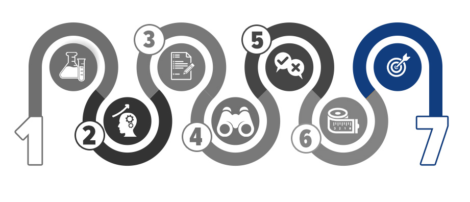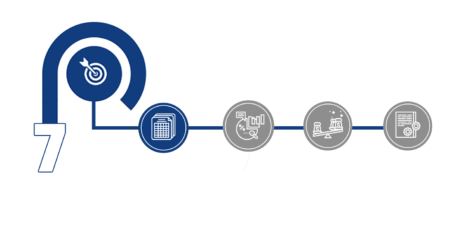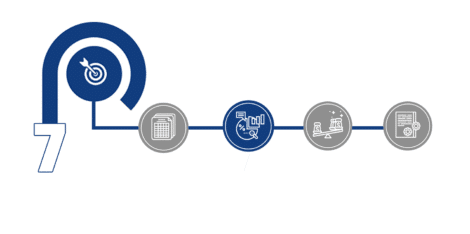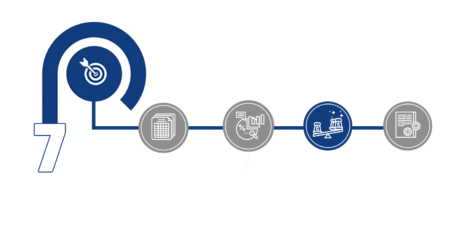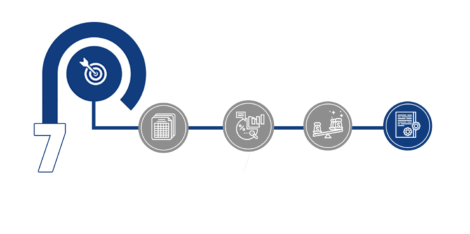Synthesise the results of market research before the business plan
Published on 18 May 2018Discover the steps to follow to ask yourself the right questions before conducting market research and writing a business plan. You can read our initial advice on this blog and download the complete guide in .pdf format
Episode #9/9 – The synthesis phase of market research is important when it comes to drafting a good business plan.
What you write will be the central core of the business plan, its foundations. The effort that you put into writing this synthesis will not be in vain. Above and beyond the exercise itself, pieces of information that you bring together at this stage can be reintroduced directly into the framework of your business plan.
Step A: Synthesise the results of the market research
Visual tools can be of assistance when summarising the results of your market research.
Commonly used methods are, for example, the SWOT analysis, analysis of Porter’s 5 Forces and the “Blue Ocean” strategy. In addition to their usefulness when summarising, they are also very popular with banks and investors.
SWOT analysis (which stands for Strengths – Weaknesses – Opportunities – Threats) is a way to categorise and view the essential information about your project. This backdrop is often included in the business plans.
The Porter’s 5 Forces analysis was “invented” by the expert in marketing Michael Porter. It allows you to represent the competitive situation in a market by studying the 5 forces that act upon it.
You can then follow the breakdown proposed in this guide (market trends, environmental analysis, qualitative and quantitative analysis of the request, competitive analysis…) to structure your overview and enhance your written words with the visualisations suggested above. They will reassure your interlocutors as to the seriousness of your work.
Step B: Identify the most promising market segments
Armed with all these scorecards, you now have a much clearer view of your market and the difficulties that await you.
But the opportunities should also be much more clearly visible. For example, it may have come to your attention during the quantitative survey that one segment (i.e. a homogeneous fraction of your future clients) responded particularly well to your product or service. Focusing your efforts on this segment of customers might be a good idea to maximize your start-up’s chances. Following too many leads may be a waste of energy; when they don’t materialise quickly enough, you could find it discouraging. And when it comes to a start-up, small victories are essential to boost morale and keep moving forward. That is why you should choose the segments that can be most easily “converted” or those with the highest yield.
Identifying promising segments can be facilitated by a Blue Ocean-type analysis, a technique appreciated by external investors and bankers, because it demonstrates that you are up to date with modern analytical methods.
The Blue Ocean strategy is a paradigm that was proposed by Kim and Mauborgne in their now-famous book.
In this book, the two authors propose looking at the market spaces that have been left blank by companies that prefer to fight in oceans that are tinted red with the blood from their competitive battles.
Kim and Mauborgne suggest using an interesting canvas in order to measure the value for the customer of an idea and to detect the presence of a blue ocean (we have used this canvas on several occasions while conducting our market research for business plans and its effectiveness persuaded us to make it a tool that we now offer to our clients).
Step C: Evaluate the size of the market for the selected segments
The second-last step is now on the horizon, quantifying the potential of the segments that you selected in the previous step.
Let’s take a simple B2C example. Imagine that you have identified the 55-65 year old segment as the one on which you want to focus your initial efforts.
Quantifying the size of this segment involves knowing how many people are aged between 55 and 65 years in the target country(ies) and evaluating the fraction of those people likely to be interested in your product or services.
The same kind of analysis can be carried out in B2B. There are national statistics and company directories that allow you to categorise companies in terms of multiple criteria (number of employees, age, turnover, sector of activity…). Each variable offers the possibility of an additional segment that you can take advantage of.
To use this data in your financial plan and make some projections, you will need to define a conversion rate. What proportion of the market will you succeed in conquering with your product or service? What is the time frame for you to make this conversion?
Defining a conversion rate – a potentially hazardous exercise
How can you project yourself into an uncertain future and determine in advance the percentage of your future prospects who will be won over by your offer?
There are several possibilities, the best being to base it on a solid quantitative survey. Therefore, you were quite right to wonder about the relevance of doing a quantitative survey earlier in the market research (episode 8).
Why not do it later? There is no right or wrong answer to this question. Ideally, you should repeat the survey (on- or off-line) at Step B of episode 9 (remember that market research is a repetitive learning process), but perhaps it will not be necessary.
Indeed, the initial phases of the market research (design thinking, qualitative interviews) may already have led you, without you noticing, to reduce the scope of your research to certain segments that you have already surveyed automatically during the quantitative phase.
If your sample in episode 8 is large enough, you may be in a position to extrapolate the results from a segment of this population.
Step D: Next step – your business plan and financial plan!
Is your market research complete? It’s time to move on to writing your business plan and financial plan.
These are the last steps before you face the suspicious frowns of bankers and investors. But that’s another story, one for which we will also be writing an ad hoc guide.

